Related Research Articles

Clan Campbell is a Highland Scottish clan, historically one of the largest and most powerful of the Highland clans. The Clan Campbell lands are in Argyll and within their lands lies Ben Cruachan. The chief of the clan became Earl of Argyll and later Duke of Argyll.
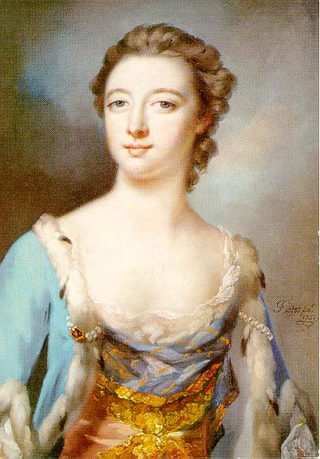
Elizabeth Campbell, Duchess of Argyll, 1st Baroness Hamilton of Hameldon, earlier Elizabeth Hamilton, Duchess of Hamilton, née Gunning, was a celebrated Anglo-Irish beauty, lady-in-waiting to Queen Charlotte, and society hostess.

Duke of Argyll is a title created in the peerage of Scotland in 1701 and in the peerage of the United Kingdom in 1892. The earls, marquesses, and dukes of Argyll were for several centuries among the most powerful noble families in Scotland. As such, they played a major role in Scottish history throughout the 16th, 17th, and 18th centuries. The Duke of Argyll also holds the hereditary titles of chief of Clan Campbell and Master of the Household of Scotland.
John Campbell may refer to:
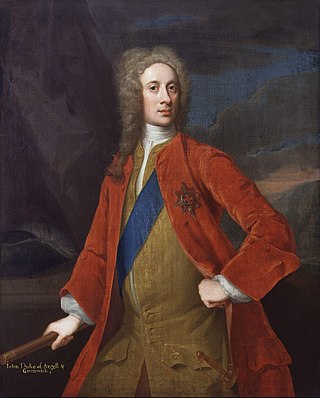
Field Marshal John Campbell, 2nd Duke of Argyll, 1st Duke of Greenwich,, styled Lord Lorne from 1680 to 1703, was a Scottish nobleman and senior commander in the British Army. He served on the continent in the Nine Years' War and fought at the Siege of Kaiserswerth during the War of the Spanish Succession. He then went on to serve as a brigade commander during the later battles of the War of the Spanish Succession, and was subsequently given command of all British forces in Spain at the instigation of the Harley Ministry. After conducting a successful evacuation of the troops from Spain, he became Commander-in-Chief, Scotland. During the Jacobite Rebellion, he led the government army against the Jacobite forces led by the Earl of Mar at the Battle of Sheriffmuir. Afterwards he served as Lord Steward and then Master-General of the Ordnance under the Walpole–Townshend Ministry.

Earl Cawdor, of Castlemartin in the County of Pembroke, is a title in the Peerage of the United Kingdom. It was created in 1827 for John Campbell, 2nd Baron Cawdor.
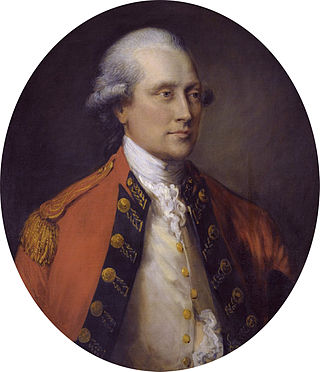
Field Marshal John Campbell, 5th Duke of Argyll, styled Marquess of Lorne from 1761 to 1770, was a Scottish soldier and nobleman. After serving as a junior officer in Flanders during the War of the Austrian Succession, he was given command of a regiment and was redeployed to Scotland where he opposed the Jacobites at Loch Fyne at an early stage of the Jacobite Rebellion and went on to fight against them at the Battle of Falkirk Muir and then at the Battle of Culloden. He later became adjutant-general in Ireland and spent some 20 years as a Member of Parliament before retiring to Inveraray Castle.
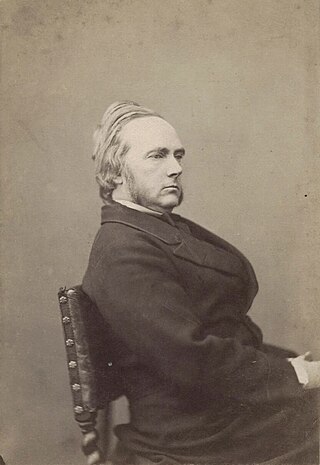
George John Douglas Campbell, 8th and 1st Duke of Argyll, was a British polymath and Liberal statesman. He made a significant geological discovery in the 1850s when his tenant found fossilized leaves embedded among basalt lava on the Island of Mull. He also helped to popularize ornithology and was one of the first to give a detailed account of the principles of bird flight in the hopes of advancing artificial aerial navigation. His literary output was extensive writing on topics varying from science and theology to economy and politics. In addition to this, he served prominently in the administrations of Lord Aberdeen, Lord Palmerston, John Russell and William Gladstone.
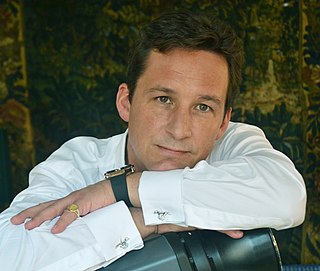
Torquhil Ian Campbell, 13th and 6th Duke of Argyll, styled as Earl of Campbell before 1973 and as Marquess of Lorne between 1973 and 2001, is a Scottish peer.

Baron Hamilton of Hameldon, of Hambledon in the County of Leicester, is a title in the Peerage of Great Britain, held by the Duke of Hamilton from 1790 to 1799 and by the Duke of Argyll since 1799.

General John Campbell, 4th Duke of Argyll, KT, PC was a Scottish military officer, Whig politician and peer who sat in the British House of Commons from 1713 to 1761.
This is a list of people who served as Lord Lieutenant of Argyllshire. The office was created on 6 May 1794 and replaced by the Lord Lieutenant of Argyll and Bute in 1975.
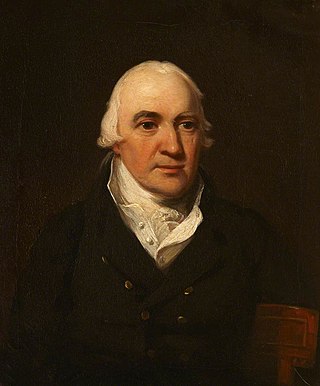
Henry Bayly-Paget, 1st Earl of Uxbridge, known as Henry Bayly until 1769 and as Lord Paget between 1769 and 1784, was a British peer.

George Bussy Villiers, 4th Earl of Jersey, PC was an English nobleman, peer, politician and courtier at the court of George III.
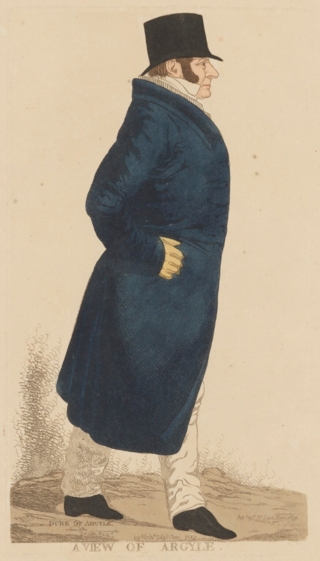
George William Campbell, 6th Duke of Argyll,, styled Earl of Campbell from 1768 to 1770 and Marquess of Lorne from 1770 to 1806, was a Scottish Whig politician and nobleman.
Events from the year 1693 in the Kingdom of Scotland.
Walter Campbell, 3rd of Shawfield and Islay and 9th of Skipness was a Scottish landowner, advocate and Rector of Glasgow University.
The Lord of Kintyre is a title in the Peerage of Scotland for Kintyre, which was created in 1626.
Colonel John Campbell, of Shawfield and Islay was a Scottish soldier in the British Army. After his early death, his widow Lady Charlotte Bury achieved fame as a diarist and novelist. He was also briefly a politician.
The Campbells of Barrichbeyan form one of the branches of the Campbells of Craignish who in turn are a branch of the Clan Campbell, a Scottish clan in Argyll, Scottish Highlands. They claim descent from Donald McEan Gorm Campbell, the 10th Laird of Craignish, 11th Chieftain of Craignish & 1st Baron Campbell of Barrichbeyan, himself second son of John Ean Gorm Campbell, 9th Laird of Craignish. His descendants retained Barrichbeyan and bought back the greater part of the estate of Craignish between 1550 and 1680. Beside the main line established in Craignish there were also cadet lines, Campbells of Lagganlochan and Campbells of Ballachlavan, later producing another cadet line, Campbells of Askomel.
References
- ↑ "Vice Admirals of the Coasts from 1660". Institute of Historical Research. Archived from the original on 28 September 2006. Retrieved 13 February 2019.